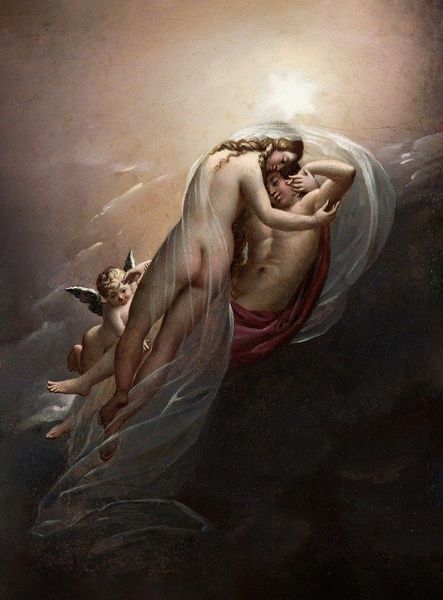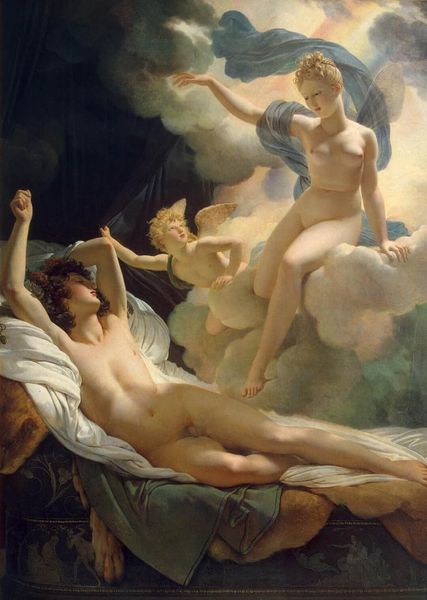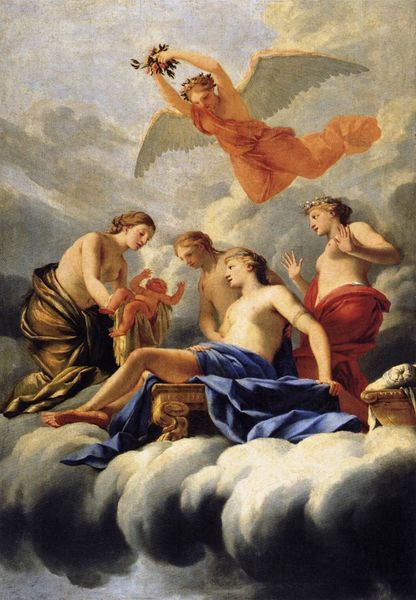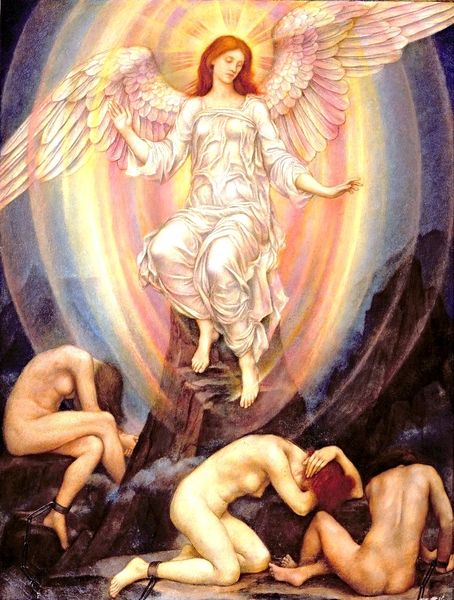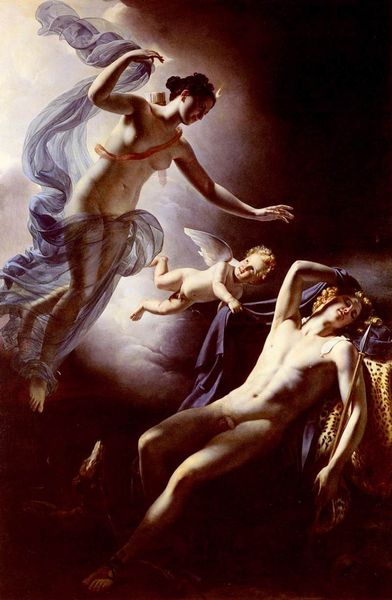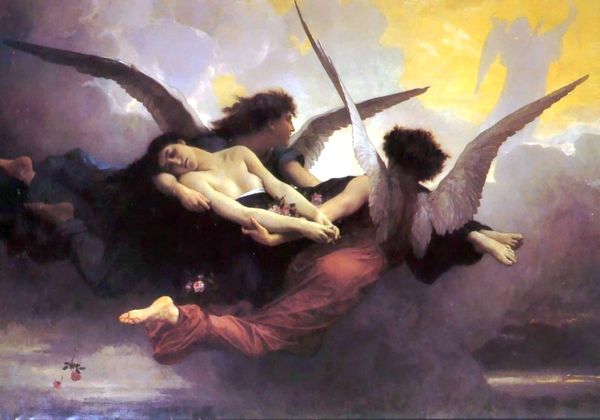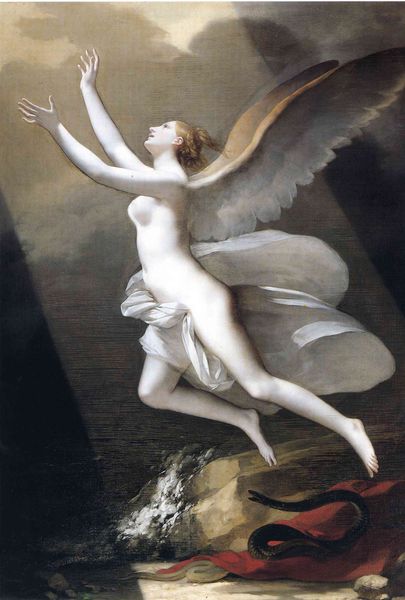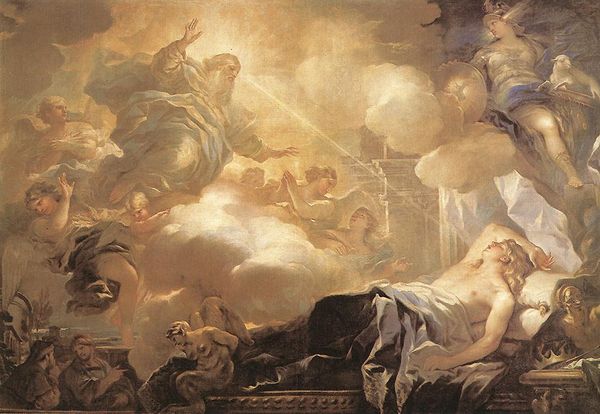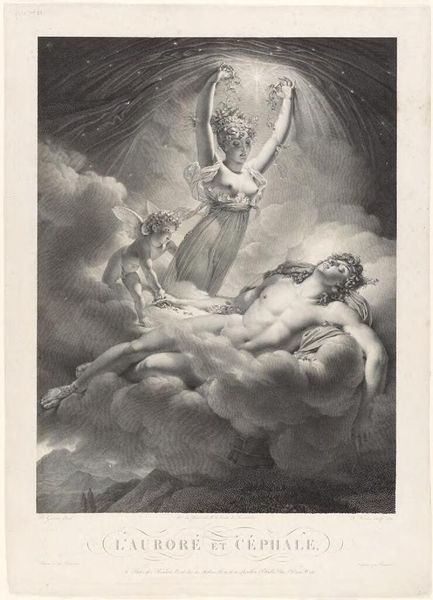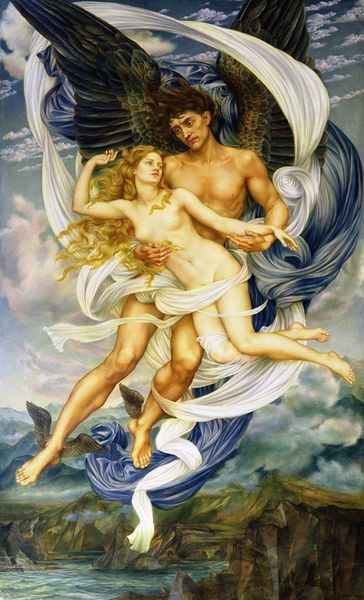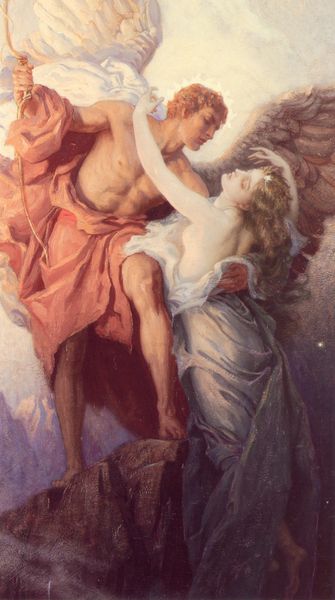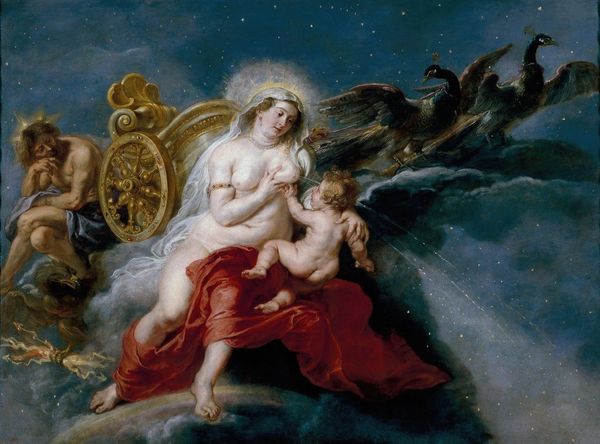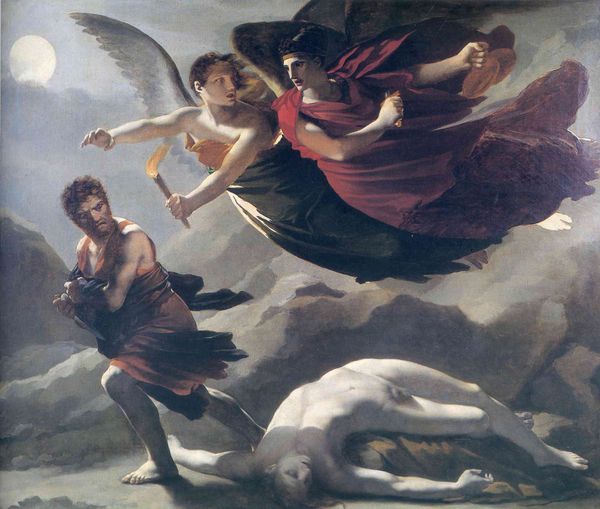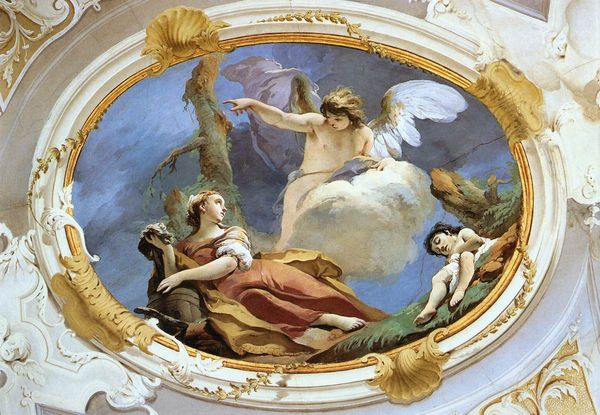
painting, oil-paint
#
portrait
#
allegory
#
painting
#
oil-paint
#
landscape
#
classical-realism
#
figuration
#
oil painting
#
roman-mythology
#
romanticism
#
mythology
#
history-painting
#
nude
Dimensions: 186 x 254 cm
Copyright: Public domain
Pierre-Narcisse Guerin painted Aurora and Cephalus in France sometime in the late 18th or early 19th century. The painting's subject comes from classical mythology: Aurora, goddess of the dawn, abducts the mortal Cephalus. Images like this speak to the cultural and political aspirations of post-revolutionary France. The artistic establishment, the Academy, promoted classical subjects rendered in a highly finished style. This aesthetic was seen to embody the values of order, reason, and civic virtue associated with the Roman Republic. The prevalence of nudity in this painting and others reflects a fascination with classical sculpture in the period. But there was a tension here. As French society modernized, some artists began to question these norms, experimenting with looser brushwork and modern subjects that we see in the Romantic period. The meaning and value of the classical style was thus hotly contested. By studying paintings such as this and reading the writings of critics, we can better understand the complex relationship between art and society in this period.
Comments
No comments
Be the first to comment and join the conversation on the ultimate creative platform.
